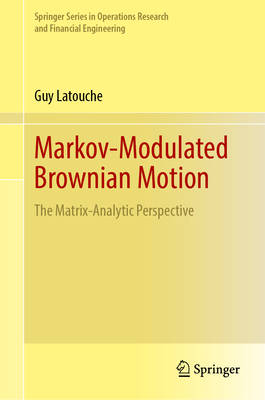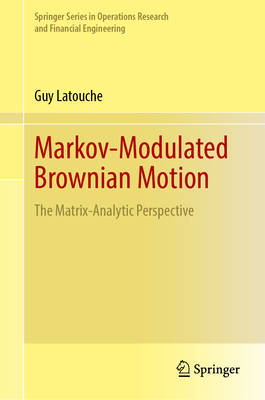
- Afhalen na 1 uur in een winkel met voorraad
- Gratis thuislevering in België vanaf € 30
- Ruim aanbod met 7 miljoen producten
- Afhalen na 1 uur in een winkel met voorraad
- Gratis thuislevering in België vanaf € 30
- Ruim aanbod met 7 miljoen producten
Zoeken
Omschrijving
This book explores regime-switching Brownian motion, a class of stochastic processes widely used in fields such as mathematical finance, risk theory, queueing theory, and epidemiological modeling. These processes are studied within the Markovian regime-switching framework, which captures dynamic environments characterized by shifts between different states or "regimes"--for example, economic cycles, seasonal environmental variations, or short-term surges in activity. The matrix-analytic approach, introduced approximately fifty years ago in the context of classical queueing theory, serves as the foundation for this analysis. This methodology emphasizes the examination of process trajectories over time, drawing insights from the interplay between analytic derivations and their physical or probabilistic interpretations. A central objective of the matrix-analytic framework is to produce solutions that are not only analytically tractable but also amenable to efficient, stable numerical algorithms--facilitating practical implementation using standard computational tools. This enables both quantitative performance evaluation and qualitative system understanding. Originally developed for telecommunication network modeling, matrix-analytic methods have since found applications across a broad spectrum of disciplines, including risk analysis, branching processes, and epidemiology. This book is the first to offer a systematic application of matrix-analytic techniques to Markov-modulated Brownian motion, filling a gap in the literature and providing a valuable resource for researchers and practitioners alike. The intended audience includes specialists in stochastic processes and their applications--such as applied probabilists, actuaries, financial analysts, systems and operations researchers, applied statisticians, and engineers in telecommunications and electrical domains. Readers are expected to have a background in advanced undergraduate calculus, linear algebra, and introductory stochastic processes.
Specificaties
Betrokkenen
- Auteur(s):
- Uitgeverij:
Inhoud
- Aantal bladzijden:
- 203
- Taal:
- Engels
- Reeks:
Eigenschappen
- Productcode (EAN):
- 9783031985751
- Verschijningsdatum:
- 23/12/2025
- Uitvoering:
- Hardcover
- Formaat:
- Genaaid
- Afmetingen:
- 155 mm x 235 mm

Alleen bij Standaard Boekhandel
+ 518 punten op je klantenkaart van Standaard Boekhandel
Beoordelingen
We publiceren alleen reviews die voldoen aan de voorwaarden voor reviews. Bekijk onze voorwaarden voor reviews.








